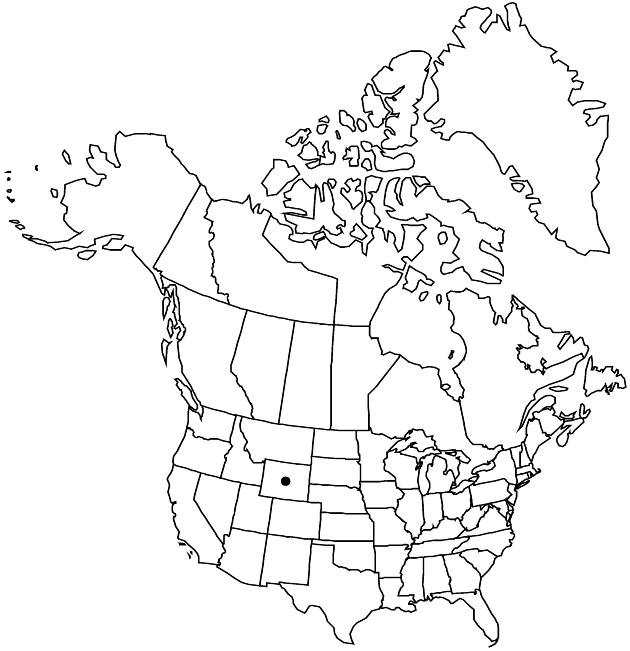Cirsium pulcherrimum var. aridum
Sida 21: 215. 2004.
Stems often clustered from branched rootstock, 15–40 cm, bases not thickened. Adaxial leaf faces gray- to white-tomentose. Heads 1–4, in compact arrays. Cypselae without stramineous apical collars.
Phenology: Flowering summer (Jun–Aug).
Habitat: Barren slopes in shallow, stony soil in very open, arid grasslands
Elevation: 2000–2200 m
Discussion
Of conservation concern.
In describing variety aridum, Dorn suggested that it “seems to belong to the C. hookerianum group,” but I fail to see this relationship. Its affinities clearly lie with Cirsium pulcherrimum. It is usually differentiable from var. pulcherrimum by the characters above, but it grows and intergrades with var. pulcherrimum on the Sweetwater Plateau in Fremont County. W. Fertig (unpubl.) has studied the ecology and distribution of var. aridum [as C. aridum] and the very similar pubescent forms of var. pulcherriumum [as C. pulcherrimum].
Variety aridum occurs in scattered localities on barren hills in Carbon, Fremont, and Sweetwater counties. It is a rare taxon, but it has not received official recognition by governmental agencies. However it is in the Center for Plant Conservation’s National Collection of Endangered Plants.
Selected References
None.
